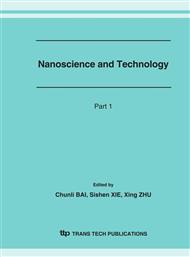p.595
p.599
p.603
p.607
p.611
p.615
p.619
p.623
p.627
On-Chip Fabrication of None-Dead-Volume Microtips for ESI-MS Applications
Abstract:
This paper proposes a novel method to on-chip fabricate a none-dead-volume microtip for ESI-MS applications. The microfluidic chip and ESI tip are fabricated in low-cost plastic based materials using a simple and rapid fabrication process. A constant-speed-pulling method is developed to fabricate the ESI tip by pulling mixed PMMA glue using a 30-μm stainless wire through the pre-formed microfluidic channel. The equilibrium of surface tension of PMMA glue will result in a sharp tip after curing. A highly uniform micro-tip can be formed directly at the outlet of the microfluidic channel with minimum dead-volume zone. Detection of caffeine, myoglobin, lysozyme and cytochrome C biosamples confirms the microchip device can be used for high resolution ESI-MS applications.
Info:
Periodical:
Pages:
611-614
Citation:
Online since:
March 2007
Authors:
Keywords:
Price:
Сopyright:
© 2007 Trans Tech Publications Ltd. All Rights Reserved
Share:
Citation:


